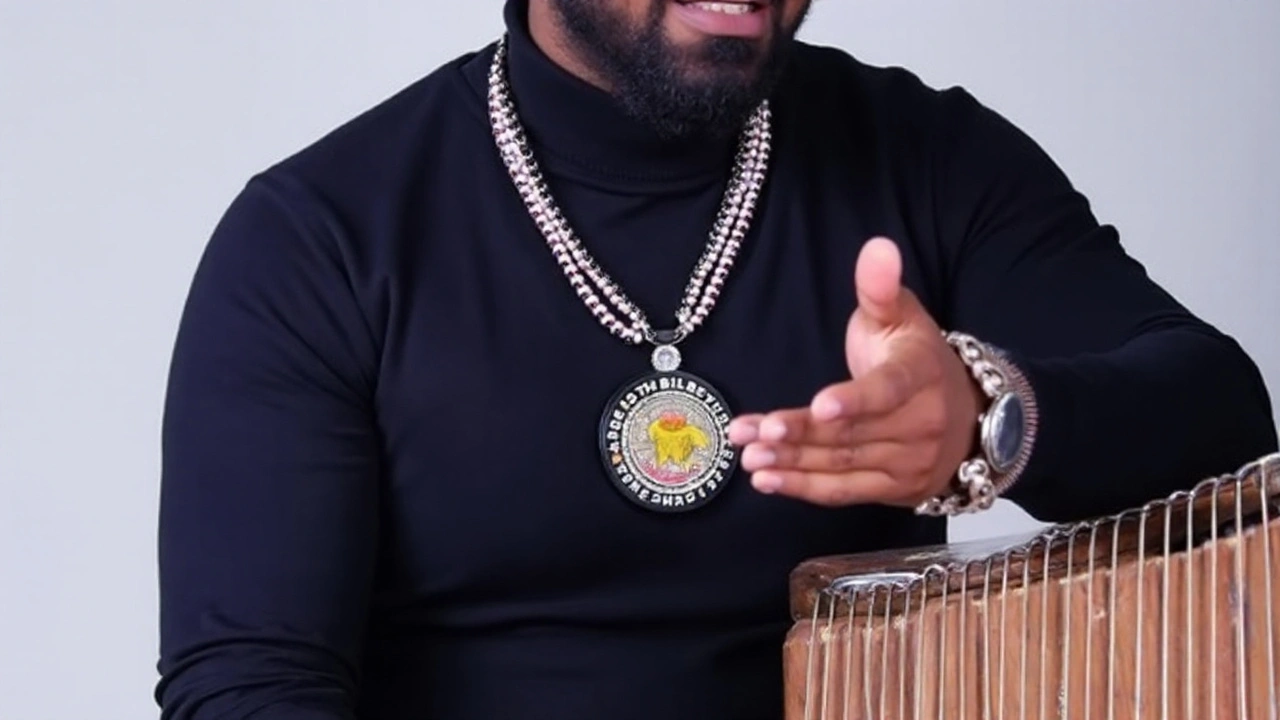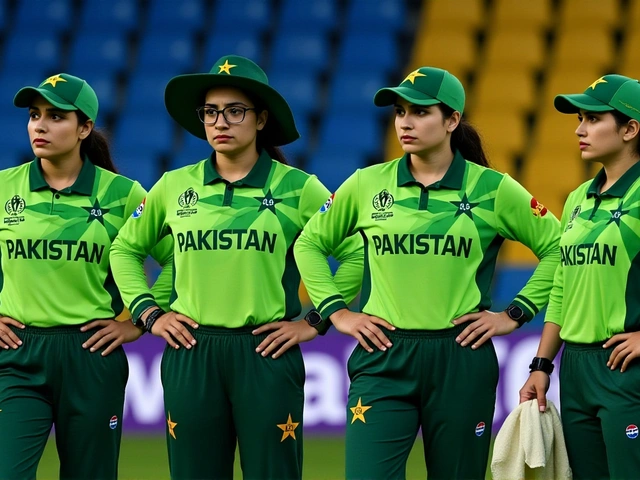South Africa Heritage Day: How Music Unites a Nation

Heritage Day in South Africa is more than a public holiday – it’s a chance for the country to showcase the mosaic of cultures that shape its identity. This year, the spotlight falls on music, thanks to creative director and vocalist Kerolin Govender, who believes that the nation’s varied musical traditions can act as a powerful glue for social cohesion.
Kerolin Govender’s vision for a united sound
Govender grew up hearing the lullabies of her Xhosa grandparents, the township kwaito beats of her teens, and the vibrant brass bands that accompany Durban’s Indian festivals. Rather than keeping those styles in separate silos, she now mixes them in live performances and workshops. Her recent "Mosaic Beats" series pulls together marabi piano riffs, gqom drum loops, mbaqanga guitar chords, and Afrikaans folk harmonies, creating a soundscape that feels both familiar and fresh.
- Marabi – early jazz-inspired piano music from the 1920s.
- Kwaito – urban dance music born in Soweto during the 1990s.
- Gqom – minimalist electronic beats from Durban’s club scene.
- Mbaqanga – upbeat, guitar‑driven style rooted in Zulu tradition.
- Traditional Zulu and Xhosa vocal chants.
- Afro‑pop influences from neighboring countries.
By presenting these genres side by side, Govender shows that South Africa’s musical heritage isn’t a collection of isolated pockets but a living conversation across generations and languages.
Heritage Day celebrations amplify the musical message
Across the country, towns and cities are staging concerts, street performances, and school workshops that echo Govendor’s approach. In Cape Town’s Bo-Kaap, drummers from Cape Malay families join jazz quartets for nightly jam sessions. Johannesburg’s Market Theatre hosts a “Rhythms of Freedom” show where former protest singers collaborate with contemporary hip‑hop artists. Rural villages in the Eastern Cape organize pot‑luck feasts where elders teach younger participants the art of the uhadi bow.
These events underline a broader truth: music can cut through linguistic and historical divides that have long plagued the nation. When a crowd sways to a blended beat, they’re not just listening—they’re participating in a shared story of resilience and hope. Organizers report higher attendance than in previous years, suggesting that the fusion model resonates with audiences hungry for a collective cultural experience.
Looking ahead, Govender plans to record a collaborative album featuring artists from each province, aiming to release it just before the next Heritage Day. If the response to the current celebrations is any indication, South Africans are ready to let music lead the way toward a more inclusive future.
12 Comments
Keith Craft
Wow, the way Kerolin weaves together marabi, gqom and mbaqanga feels like a grand tapestry of South Africa’s soul; each thread resonates with histories that have survived apartheid’s shadows and blossomed into joyous noise.
Kara Withers
For anyone curious, the term “gqom” actually originates from Zulu onomatopoeia meaning “hit” or “drum”, and it’s rooted in the Durban club scene of the early 2010s, which explains its raw, minimalist pulse in Govender’s mixes.
boy george
One must appreciate the subtle synthesis of post‑colonial tonalities here.
Cheryl Dixon
While many hail this fusion as unity, one could argue that blending distinct traditions risks diluting their unique protest histories, turning powerful dissent into background ambience for comfort.
Charlotte Louise Brazier
That’s nonsense – the very act of colliding these sounds proves that South Africa can smash old barriers; the energy on Heritage Day is proof that cultural aggression can be constructive.
Donny Evason
From the bustling streets of Soweto to the quiet valleys of the Eastern Cape, music has always been the lingua franca of resistance and celebration; Govender’s project simply amplifies a conversation that has been happening for centuries, reminding us that cultural exchange is not a new concept but a living tradition.
Phillip Cullinane
Listening to the Mosaic Beats initiative offers a multidimensional case study of ethnomusicological hybridization, wherein the modal frameworks of marabi intersect with the syncopated rhythmic cycles characteristic of gqom, thereby generating a polyphonic texture that challenges conventional genre taxonomy.
The resultant sonic architecture can be analyzed through the lens of cultural diffusion theory, illustrating how translocal musical idioms migrate and adapt within a post‑apartheid sociocultural matrix.
Moreover, the deployment of traditional instruments such as the uhadi bow alongside electronic drum machines exemplifies a dialogic praxis between oral heritage and digital production methodologies.
From a pedagogical standpoint, workshops that juxtapose township kwaito with Afrikaans folk harmonies create cognitive dissonance that facilitates deeper engagement with pluralistic identity constructs.
Audience reception metrics, as reported by municipal cultural departments, indicate a statistically significant uptick in participation rates compared to previous iterations of Heritage Day programming, suggesting an emergent preference for integrative artistic experiences.
This phenomenon aligns with contemporary scholarship on collective memory formation, wherein shared musical moments function as mnemonic anchors for communal narratives.
Additionally, the collaborative recording project slated for the next year promises to serve as an archival repository, preserving performative nuances for future ethnographic inquiry.
In terms of economic impact, the surge in ticket sales and ancillary tourism revenue underscores the market viability of culturally synthesized performances, thereby encouraging further investment from both public and private sectors.
It is also noteworthy that the interdisciplinary nature of the project fosters cross‑sectoral partnerships, linking musicians, historians, and technologists in a mutually reinforcing ecosystem.
Finally, the initiative’s emphasis on inclusivity resonates with broader policy objectives aimed at redressing historical inequities, reinforcing the notion that artistic expression can be a catalyst for social cohesion.
Critically, the participatory nature of these workshops empowers youth participants to assume agency in cultural storytelling, thereby counteracting narratives of marginalization.
Such empowerment aligns with UNESCO’s intangible cultural heritage guidelines, which emphasize community involvement as a cornerstone of heritage preservation.
Furthermore, the intergenerational exchange observed during the festivals serves as a living laboratory for scholars interested in the transmission of musical semantics across age cohorts.
By documenting these encounters, researchers can develop more robust models of cultural resilience applicable beyond the African continent.
In sum, the Mosaic Beats phenomenon exemplifies how intentional artistic curation can transcend entertainment, becoming a conduit for sociopolitical dialogue and collective healing.
Janie Siernos
While the enthusiasm is admirable, we must be cautious not to romanticize these events as cure‑alls; cultural fusion can sometimes mask underlying socioeconomic disparities that still plague many communities.
joy mukherjee
True, the festivities shouldn’t blind us to deeper issues 😊; they can, however, serve as entry points for dialogue and grassroots activism that address those very inequalities.
Rob Chapman
Everyone seems to be vibing to the same beat, and that’s exactly the point – music can be the bridge that turns strangers into neighbors.
Delaney Lynch
Has anyone looked into how the inclusion of the uhadi bow influences the acoustic spectrum of these performances, and could that possibly affect audience perception of authenticity?
Nicholas Mangraviti
Music truly unites us.



Write a comment